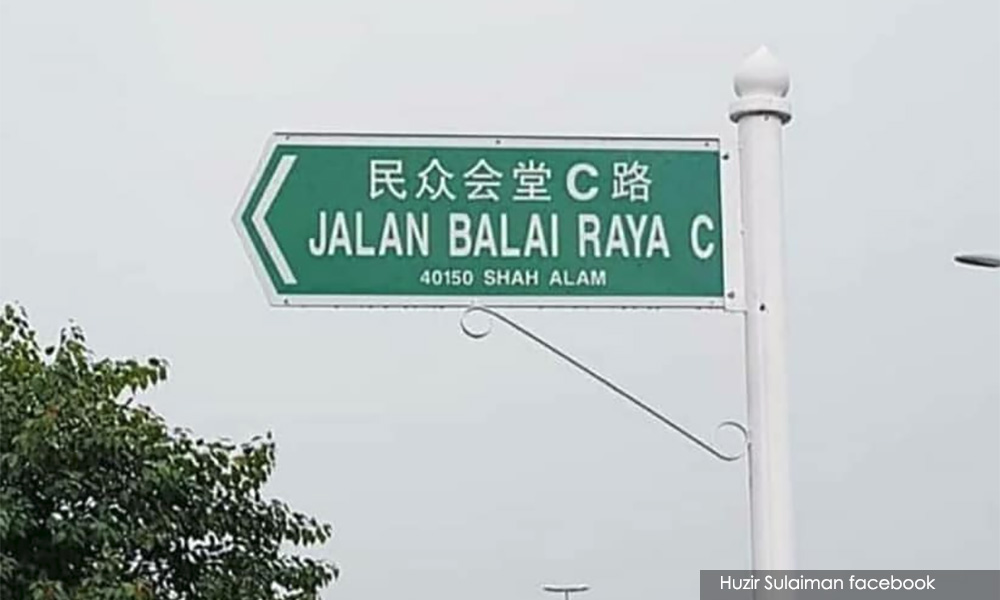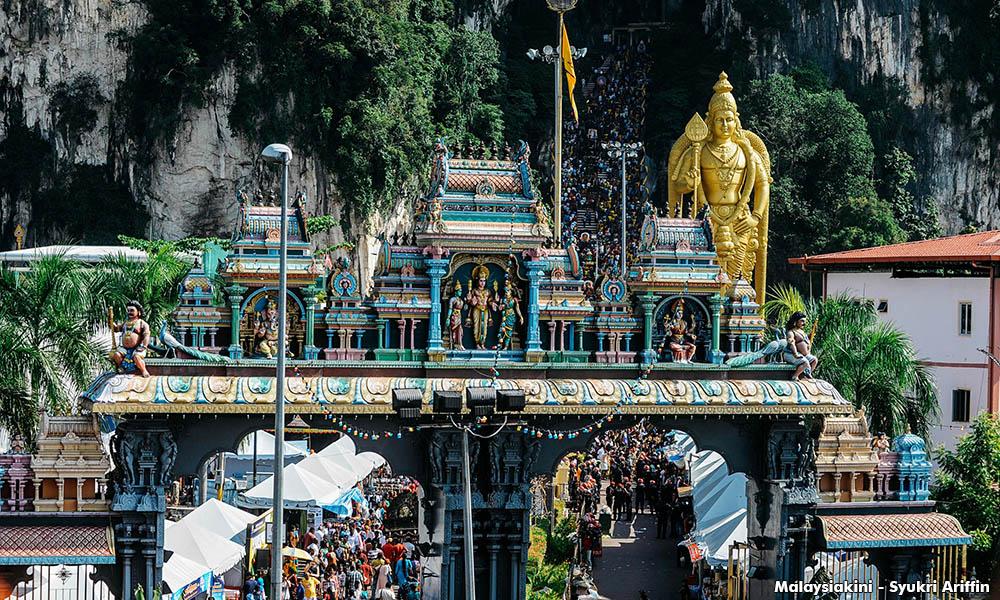
The new Pakatan Harapan government has pledged to uphold good governance and transparency. Yet, the recent decision to take down bilingual road signs has been implemented without proper explanation or rationale.
One would expect the Selangor state government to explain when and why the bilingual signs were put up in the first place and then only explain why they have now to be taken down.
This controversy over public signs using more than one language is not a new one. Only recently in Johor, the municipal council created a storm when it wanted Chinese shop signs that had been embossed onto the shop pillars for nearly 100 years to be removed.
These two recent controversies have occurred under the new Pakatan Harapan administration which has promised a New Malaysia different from the old regime under the BN. The BN was, of course, well-known for its National Cultural Policy that was supposed to have been introduced in 1971 at a conference at which the representatives from the Chinese, Indian and other Malaysian communities were not represented. Only a token number of non-Malay academics were invited.
At this undemocratic assembly, it was stipulated that the new ‘National Cultural Policy’ (NCP) would be based on the following: that the national culture must be based on Malay culture; that suitable elements from other cultures may be accepted as part of the national culture; and, Islam is an important component in moulding the national culture.
During the 1980s, there were numerous controversies involving the use of shop signs in languages other than Bahasa Malaysia and also the banning of lion dances and other such restrictive directives from municipal authorities.
Isn’t it time to ditch the narrow cultural policy?
It was not until the farce over the FFM awards marginalising 'non-BM' films in 2016 that it suddenly dawned on Malaysians that for all these years since the 80s, Umno had still not abandoned its restrictive NCP. It took enlightened film-makers such as Afdlin Shauki to see through and scoff at this patently divisive policy.
During the 80s, there were also writers such as Salleh ben Joned who took a public stand against the NCP and its practice of giving awards for Malaysian literature only to works written in BM. And when the government attempted to implement this policy by banning lion dances and other non-Malay cultural forms in schools and other functions, there was uproar from the Chinese and Indian communities.
To date, Umno's education policy remains committed to this policy of BM-only language in all schools, and this is why Umno does not allow the progressive growth of Chinese and Tamil schools even when they are bursting at the seams with huge enrolments including non-Chinese students.
Is Malaysia not truly Asia?
The 1990s onwards have been relatively freer of such controversy, especially when the government realised that revenue from tourism was not to be sneezed at and tourists were more fascinated by multi-cultural 'Malaysia Truly Asia'. The challenge of globalisation and the reality of tourism as a growth sector has forced the BN government to rethink its mono-cultural policy for the simple reason that mono-culture does not sell! Tourists prefer the choice and charm that cultural diversity offers and would not want to come to a country that imposes one culture on all its diverse peoples.

For example, the Thaipusam festival at Batu Caves now attracts more tourists than a similar event in Tamil Nadu! Would it not be tourist-friendly if there were multi-lingual signs in the locality? Likewise, some Chinese festivals like the “Nine Emperor Gods” and the “Hungry Ghosts” festivals are celebrated in a bigger way in Malaysia than in China or Taiwan. Would it not indeed be democratic and courteous to have multi-lingual signs in these tourist spots, especially when we want to attract more tourists to our country?
This reassertion of traditional cultures by the Chinese and Indians in Malaysia has partly been a reaction to the restrictions of the NCP imposed in the 1980s. The same is true of the indigenous cultures in East Malaysia and even the Thais in the north of the peninsula. The government’s promotion and spread of multimedia technologies and satellite television has also meant that Malaysians are impacted not only by Tamil and Chinese programmes but by global cultures 24 hours a day.
Globalisation and the privatisation of tertiary education have also led to the dominance of the English language in commerce and industry. In recent years, the government has even reneged on its own Malay-centric policy by enforcing the teaching of Maths and Science in English. In such an environment of its own making, it is strange that the government would still insist on imposing its restrictive NCP.
Ironies of the National Cultural Policy
It is ironic that Islamisation has led to the banning or extinction of traditional Malay cultural forms like the Mak Yong and Wayang Kulit ostensibly because of their animistic and pre-Islamic elements. Meanwhile, Indonesia has accused Malaysia of heritage theft by usurping their folk songs such as Rasa Sayang, and musical instruments like the Angklung, and even batik, wayang kulit and other traditional dances.
It is also ironic that at the Umno general assembly in October 2010, its leaders were joking about their own pendatang origins – Mamak, Bugis, Javanese and others. At the same time, it was revealed that while the Chinese at Kampung Pulai in Kelantan had been there for five centuries, they are regarded differently and still do not possess land titles!
Vive la difference
In recent years, cultural diversity and democracy has been established by the world community (Unesco) as the basis of cultural policies for all countries in the United Nations. And while our Education Act and National Education Policy may be otherwise, the Malaysian Federal Constitution actually does reflect a spirit of cultural democracy.
The assimilationist approach has been thoroughly discredited as unworkable and unrealistic. It is now widely accepted in the world community that it is a multi-ethnic society that can function most effectively and harmoniously on the basis of pluralism, that is, allowing and assisting ethnic minority communities to maintain their distinct ethnic identities within a national framework of commonly accepted values and practices.
The obligation is on the government to ensure equal treatment and protection by law for members of all groups, together with equality of access to education and employment, equal freedom and opportunity to participate fully in social and political life, and equal freedom of cultural expression. The concept of pluralism implies respecting the very diversity of such a society as an enrichment of the experience of all those living within it.
No culture is a hermetically sealed entity. All cultures are influenced by and in turn influence other cultures. All cultures are in a state of dynamic flux, driven by internal and external forces. Most modern societies such as the European Union encourage proficiency in three languages.
Multilingualism serves to open minds, stimulate intellectual agility as well as expand cultural horizons. We are just two years away from supposedly becoming a “nation at peace with itself” in Vision Perfect 2020. Isn’t it high time to ditch narrow-minded policies such as the NCP and maybe even learn an additional French slogan: “Vive la difference”!
KUA KIA SOONG is the adviser of Suaram. - Mkini



No comments:
Post a Comment
Note: Only a member of this blog may post a comment.